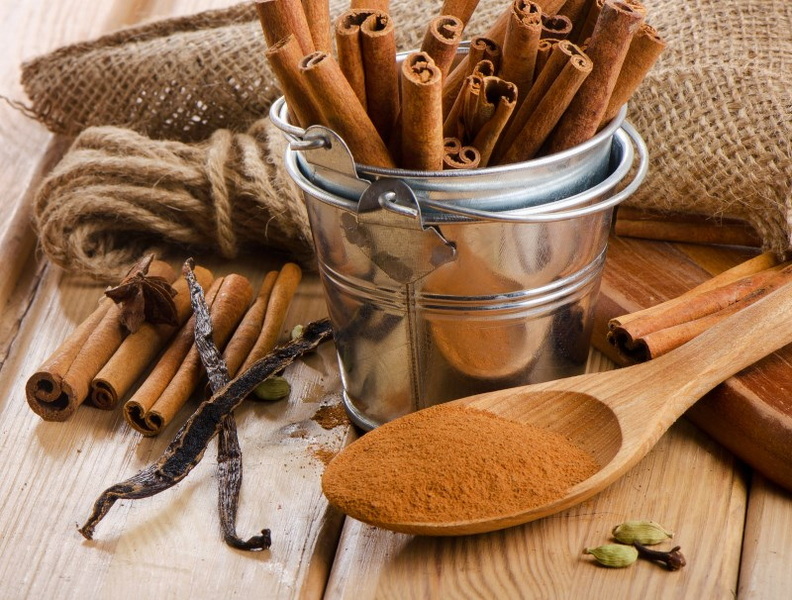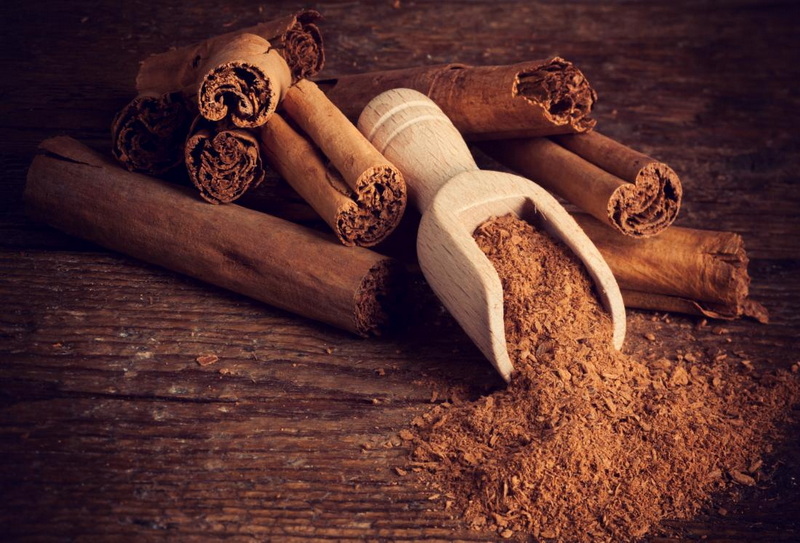Content Menu
● Introduction to Cinnamon Bark Extract
>> Nutritional Profile of Cinnamon Bark
● Health Benefits of Cinnamon Bark Extract
>> 1. Boosts Digestion and Gut Health
>> 2. Reduces Inflammation and Pain
>> 3. Supports Heart Health
>> 4. Fights Infections
>> 5. Helps with Blood Sugar Control
● Extraction Methods for Cinnamon Bark
>> Organic Solvent Extraction
>> Steam Distillation
>> CO2 Supercritical Fluid Extraction
● Cinnamon Varieties and Their Uses
>> 1. Cassia Cinnamon
>> 2. Ceylon Cinnamon (True Cinnamon)
>> 3. Cinnamon Bark Extract
● Best Ways to Use Cinnamon Bark Extract
>> 1. Cinnamon Tea
>> 2. Cooking
>> 3. Supplements
>> 4. Skincare
● Safety Precautions for Handling Cinnamon Bark Extract
● Harvesting and Production of Cinnamon
>> Traditional vs. Modern Harvesting Methods
● Conclusion
● FAQ
>> 1. What are the primary health benefits of cinnamon bark extract?
>> 2. How can I incorporate cinnamon bark extract into my diet?
>> 3. What are the different methods for extracting cinnamon bark extract?
>> 4. Can cinnamon bark extract help with weight loss?
>> 5. Are there any side effects of consuming cinnamon bark extract?
● Citations:
Cinnamon bark extract is renowned for its numerous health benefits, ranging from improving digestion and reducing inflammation to supporting heart health and fighting infections. This article will delve into the best ways to utilize cinnamon bark extract to maximize its benefits, along with an exploration of its nutritional profile and health advantages.

Introduction to Cinnamon Bark Extract
Cinnamon bark, derived from the h3Cinnamomumh3 genus, is a popular spice used globally for its distinctive flavor and medicinal properties. The extract of cinnamon bark is rich in bioactive compounds like cinnamaldehyde, which is responsible for its health benefits.
Nutritional Profile of Cinnamon Bark
| Nutrient |
Amount per 1 teaspoon (2.6 grams) |
| Calories |
6 calories |
| Carbohydrates |
2 grams |
| Fiber |
1 gram |
| Protein |
0 grams |
| Fat |
0 grams |
| Calcium |
13 milligrams |
| Iron |
0.3 milligrams |
| Magnesium |
1.4 milligrams |
| Potassium |
11 milligrams |
Pro Tip: Incorporating a small amount of cinnamon bark into your diet can provide significant nutritional benefits, including fiber, calcium, and magnesium.
Health Benefits of Cinnamon Bark Extract
Cinnamon bark extract offers a wide range of health benefits, making it a valuable addition to your daily routine.
1. Boosts Digestion and Gut Health
Cinnamon bark is known for its ability to enhance digestion by stimulating the production of digestive enzymes. This helps in reducing symptoms like bloating, gas, and indigestion.
- How it works: Cinnamon bark promotes gastric motility, aiding in the efficient breakdown and movement of food through the digestive system.
- Health Impact: Regular consumption can help prevent acid reflux and improve overall gut health.
- Pro Tip: Drinking cinnamon tea after meals can reduce bloating and promote smoother digestion.
2. Reduces Inflammation and Pain
Cinnamon bark contains anti-inflammatory compounds such as cinnamaldehyde and eugenol, which help reduce inflammation and pain.
- How it works: These compounds inhibit the production of pro-inflammatory cytokines, reducing swelling and pain in affected areas.
- Health Impact: Regular consumption can help manage chronic pain associated with conditions like rheumatoid arthritis and osteoarthritis.
- Pro Tip: Use cinnamon powder in cooking or drink cinnamon tea to naturally reduce inflammation.
3. Supports Heart Health
Cinnamon bark helps lower cholesterol levels, particularly LDL cholesterol, reducing the risk of heart disease. It also improves blood circulation and can lower blood pressure.
- How it works: Bioactive compounds in cinnamon bark reduce oxidative stress and prevent plaque buildup in arteries, promoting better heart health.
- Health Impact: Incorporating cinnamon bark into your daily routine can support a healthy heart and reduce cardiovascular disease risk.
- Pro Tip: Add cinnamon bark to your morning smoothies or oatmeal for a heart-healthy boost.
4. Fights Infections
Cinnamon bark is a natural antibacterial and antifungal agent, effective in combating harmful bacteria, viruses, and fungi.
- How it works: The antimicrobial properties inhibit the growth of harmful microorganisms, protecting the body from infections.
- Health Impact: Drinking cinnamon tea or incorporating cinnamon bark into meals can boost the immune system and fight off common colds and flu.
- Pro Tip: Use cinnamon bark in homemade teas or soups to fight infections during cold and flu season.
5. Helps with Blood Sugar Control
Cinnamon bark increases insulin sensitivity, helping the body process sugar more effectively, which can lead to better blood sugar control and potentially help manage type 2 diabetes.
- How it works: Cinnamon bark can increase glucose uptake into muscles and the liver, aiding in the regulation of blood sugar levels.
- Health Impact: Regular consumption may help reduce the risk of type 2 diabetes and support healthy blood sugar levels.
- Pro Tip: Consume cinnamon bark regularly to support blood sugar management.

Extraction Methods for Cinnamon Bark
The extraction of cinnamon bark extract involves several methods, including organic solvent extraction, steam distillation, and CO2 supercritical fluid extraction. These methods help isolate the bioactive compounds responsible for its health benefits.
Organic Solvent Extraction
This method involves using solvents like petroleum ether to extract volatile oils from cinnamon bark. The process includes grinding the cinnamon, mixing it with the solvent, and then evaporating the solvent to obtain the essential oil.
Steam Distillation
Steam distillation is another common method used to extract essential oils from cinnamon bark. This process involves passing steam through the ground cinnamon to release the oils, which are then collected and separated.
CO2 Supercritical Fluid Extraction
This method uses carbon dioxide under high pressure to extract the oils from cinnamon bark. It is considered environmentally friendly and can produce high-quality extracts.
Cinnamon Varieties and Their Uses
Cinnamon is derived from the inner bark of trees in the h3Cinnamomumh3 genus. The two most commercially significant types are Cassia Cinnamon (h3Cinnamomum cassiah3) and Ceylon Cinnamon (h3Cinnamomum verumh3).
1. Cassia Cinnamon
Cassia cinnamon is the most widely available variety and is commonly used in commercial food products. It has a strong, spicy flavor with a high cinnamaldehyde content, giving it a bold taste and aroma.
- Pros: Affordable, intense flavor, long shelf life.
- Cons: Contains high levels of coumarin, which can be harmful in large doses.
- Common Uses: Baked goods, flavored beverages, herbal supplements, and traditional medicine.
2. Ceylon Cinnamon (True Cinnamon)
Ceylon cinnamon, often referred to as “true cinnamon,” has a milder, sweeter flavor with a low coumarin content. It is considered the premium variety and is favored for health-focused formulations.
- Pros: Low in coumarin, delicate taste, high in antioxidants.
- Cons: More expensive, less intense flavor compared to Cassia.
- Common Uses: Premium health supplements, herbal teas, fine pastries, and pharmaceuticals.
3. Cinnamon Bark Extract
Cinnamon Bark Extract is a concentrated form of the spice, standardized to specific active compounds like polyphenols and cinnamaldehyde. It is commonly used in dietary supplements for its metabolic and antioxidant benefits.
- Pros: Higher potency, controlled active ingredient levels, versatile applications.
- Cons: Requires precise dosing and formulation expertise.
- Common Uses: Weight management supplements, blood sugar support formulations, and natural flavoring agents.
Best Ways to Use Cinnamon Bark Extract
To maximize the benefits of cinnamon bark extract, it can be incorporated into various aspects of your daily routine.
1. Cinnamon Tea
Drinking cinnamon tea after meals can aid digestion and reduce bloating. Simply steep cinnamon bark in hot water for a few minutes.
2. Cooking
Add cinnamon powder to your meals to enhance flavor and reap its health benefits. It pairs well with sweet and savory dishes alike.
3. Supplements
Cinnamon bark extract is available in supplement form, making it easy to incorporate into your daily routine. However, consult with a healthcare provider before starting any new supplements.
4. Skincare
Cinnamon bark extract can be used in skincare products due to its antimicrobial properties, which can help combat acne and improve skin health.
Safety Precautions for Handling Cinnamon Bark Extract
When handling cinnamon bark extract, it is essential to follow safety guidelines to avoid any adverse effects.
- Avoid Contact: Keep the extract away from eyes, skin, and clothing to prevent irritation.
- Ventilation: Use the extract in well-ventilated areas to avoid inhaling dust or vapors.
- First Aid Measures: In case of skin contact, wash with soap and water. For eye exposure, flush with water and seek medical attention if necessary[2][6].
Harvesting and Production of Cinnamon
Cinnamon harvesting is a meticulous process that involves cutting down the stems of cinnamon trees, stripping the outer bark, and carefully peeling off the inner bark. The inner bark is then dried to develop its characteristic flavor and aroma[1].
Traditional vs. Modern Harvesting Methods
Traditional methods emphasize manual handling and are valued for preserving quality, especially in small-batch production. Modern techniques incorporate machinery to enhance efficiency and reduce labor strain[1].
Conclusion
Cinnamon bark extract is a versatile and beneficial addition to any health regimen. Its ability to improve digestion, reduce inflammation, support heart health, fight infections, and aid in blood sugar control makes it a valuable natural remedy. By incorporating cinnamon bark extract into your diet through teas, cooking, or supplements, you can maximize its health benefits.

FAQ
1. What are the primary health benefits of cinnamon bark extract?
Cinnamon bark extract offers several health benefits, including improving digestion, reducing inflammation, supporting heart health, fighting infections, and aiding in blood sugar control.
2. How can I incorporate cinnamon bark extract into my diet?
You can incorporate cinnamon bark extract into your diet by drinking cinnamon tea, adding cinnamon powder to your meals, or taking cinnamon supplements.
3. What are the different methods for extracting cinnamon bark extract?
The extraction methods include organic solvent extraction, steam distillation, and CO2 supercritical fluid extraction.
4. Can cinnamon bark extract help with weight loss?
While cinnamon bark extract may aid in improving metabolism and reducing inflammation, there is limited direct evidence linking it to significant weight loss.
5. Are there any side effects of consuming cinnamon bark extract?
Cinnamon bark is generally safe, but high doses can cause stomach upset or interact with certain medications. Always consult with a healthcare provider before starting any new supplements.
Citations:
[1] https://rawspicebar.com/blogs/spices-101/the-origin-of-cinnamon-and-how-its-harvested
[2] https://www.parchem.com/siteimages/attachment/ghs%20cinnamon%20bark%20extract%20msds.pdf
[3] https://greenjeeva.ca/cinnamon-bark-extract-vs-cassia-vs-ceylon/
[4] https://www.rxlist.com/supplements/cinnamon_bark.htm
[5] https://www.elo.health/articles/the-ultimate-guide-to-cinnamon/
[6] https://file.medchemexpress.com/batch_PDF/HY-N13242/Cinnamon-Bark-Extract-SDS-MedChemExpress.pdf
[7] https://pmc.ncbi.nlm.nih.gov/articles/PMC9914695/
[8] https://www.nhrorganicoils.com/uploads/20180123123205e_Cinnamon_Bark_SDS.pdf
[9] https://pmc.ncbi.nlm.nih.gov/articles/PMC4003790/






























